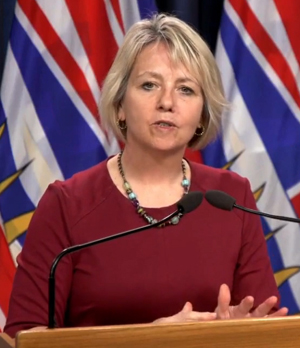
Tuesday September 1, 2020 | VICTORIA, BC
by Mary P Brooke, B.Sc., editor | Island Social Trends
“The increase in the number of new cases is a concern for all of us,” said BC Provincial Health Officer Dr Bonnie Henry at the end of August.
“We must to do our part and support public health teams to quickly manage new cases so we can contain the spread of the virus and ensure community spread remains low,” she told media and the public who tune in to her livestreamed 3 pm COVID update sessions with Health Minister Adrian Dix.
“After many months of restrictions, we all felt the need to reconnect with our family and friends this summer, but now we must slow down on our social interactions and prepare for the respiratory season ahead.”
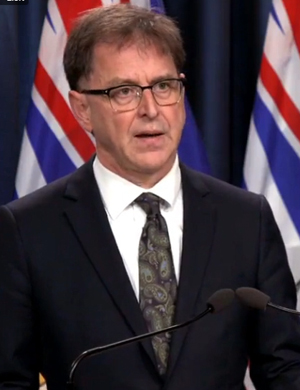
Dr Henry explained that it can be “difficult to tell the difference” between a cold, allergies, influenza and COVID-19. “As a result, the first step for everyone in B.C. needs to be to stay home if we are not 100% healthy,” she said.
Which is asking a lot when people have jobs and school commitments, but British Columbians showed their mettle this spring and area likely to pull their weight again this fall and winter.
Repeating the retreat:
“We need everyone to pay attention and step back from the social interactions we have had this summer, so when the cooler weather and respiratory season arrives, we are ready for the challenge,” said Dr Henry.
With that request, public health is asking people to return to their self-isolation and small-bubble skills and arrangements that became practiced during the onset phase of the pandemic in March through May of this year.
“As we go back to our offices, workplaces and schools, we need to get back to the basics with our layers of protection and personal COVID-19 safety measures. This will allow us to protect our most vulnerable during the colder months,” she said.
“This means all of us washing our hands regularly, keeping our groups small, giving others the space to stay safe in uncontrolled environments, especially when we are around people we don’t know, wearing masks when needed and always staying home when ill.”
Embedded expectations:
All of this expectation to spend time at home also underscores the reliability of housing. Not everyone has secure housing (either by being renters, or by income challenges, or because of unhealthy social relationships within the home).
Being able to send people back into their homes if they’re ill also subsumes availability of Internet, smartphones and other remote technologies that will enable people to work or continue schooling from a home location.
Cooperation of employers and workplaces:
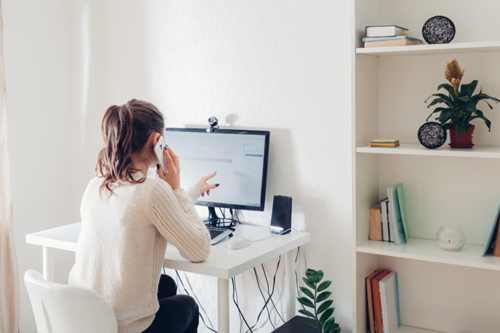
“The bar to stay home needs to be lower than we have ever had it before. Our superheroes are not the people who put aside illness and go to work, but the people who protect colleagues by staying away until they are healthy once again.”
“We ask employers, caregivers and parents to think ahead and prepare for the days when an employee or child is feeling unwell. Employers also need to ensure they are giving employees the flexibility to stay home without recrimination or financial harm.”
New thinking:
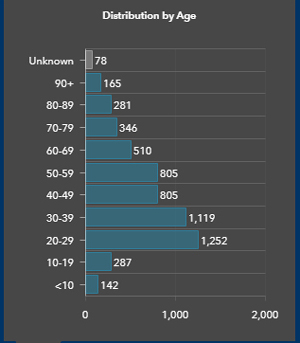
“We can prepare now for the challenges that may lie ahead with new thinking, new routines and proven safety precautions,” says BC’s top doctor.
“Our goals for B.C. are clear: prevent cases through our renewed personal safety measures, pay attention to how we are feeling so we can detect new cases and support our public health teams throughout the province to respond quickly to contain the spread of the virus.”
More young adults will need to continue understanding that they can be vectors of COVID-19 spread to people around them. They themselves might not experience a COVID infection intensely, but they could become spreaders to others in their care-zone (children, partners, older relatives).
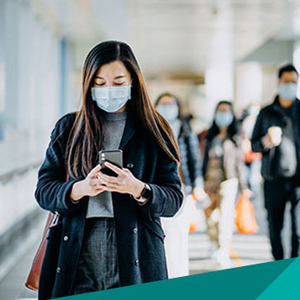
Young adults could be asymptomatic after exposure to COVID; wearing a face mask in public could help prevent unintended spread (which is an evolution in public health messaging, as originally masks were considered to be low in the hierarchy of protective measures).
“Let’s start today to close the summer gaps. Let’s use our layers of protection as we keep our activities going and let’s stay strong as we protect our most vulnerable, our elders, our communities and ourselves,” says Dr Henry.
Layers of protection against COVID-19:

Layers of protection against the spread of COVID-19 include physical distancing (2 metres apart from others), maintaining a small bubble of close social contact, frequent hand washing, sneeze etiquette, wearing a mask if physical distancing cannot be maintained (especially in closed or poorly ventilated spaces), and staying home if not feeling well.


